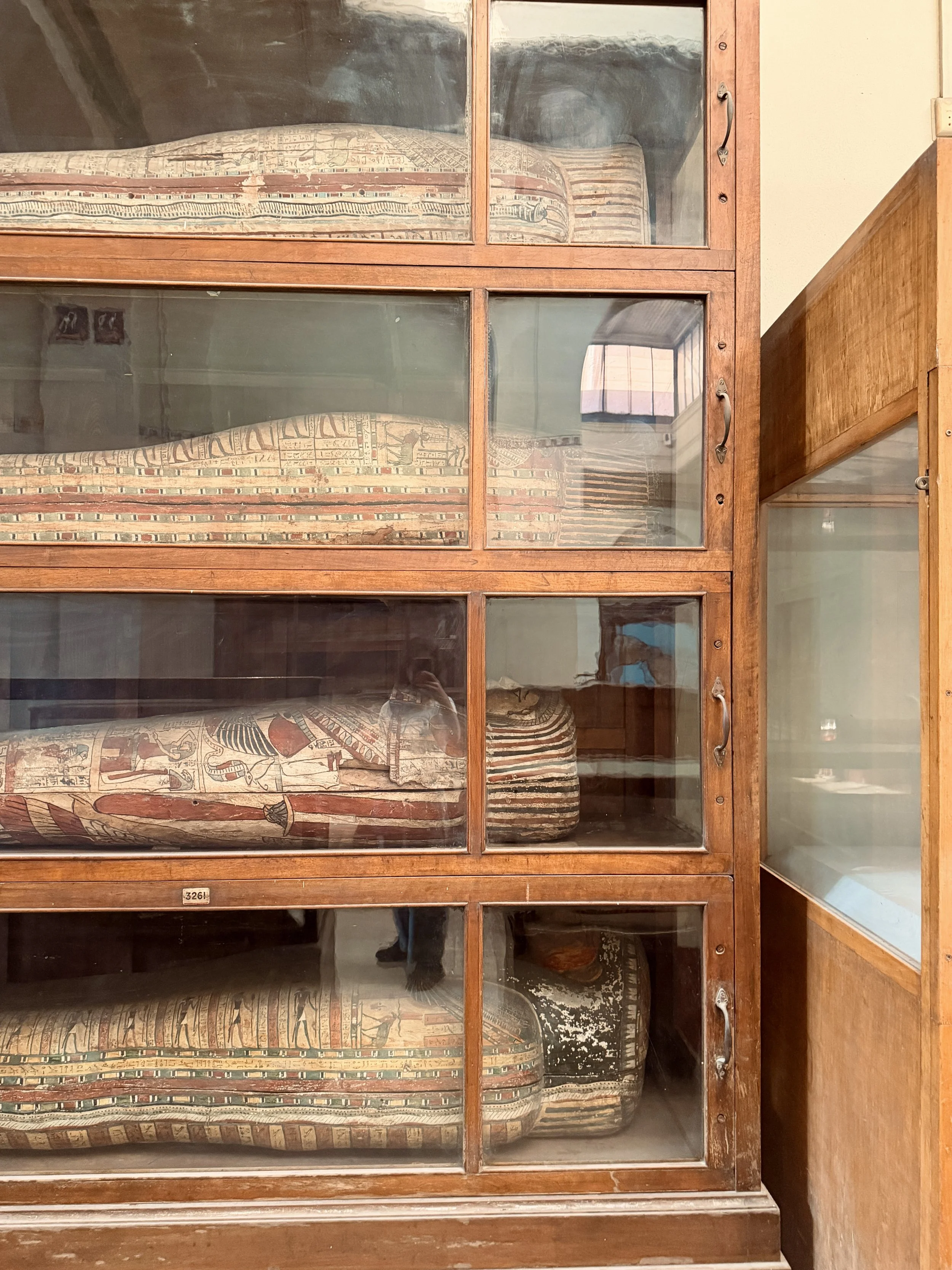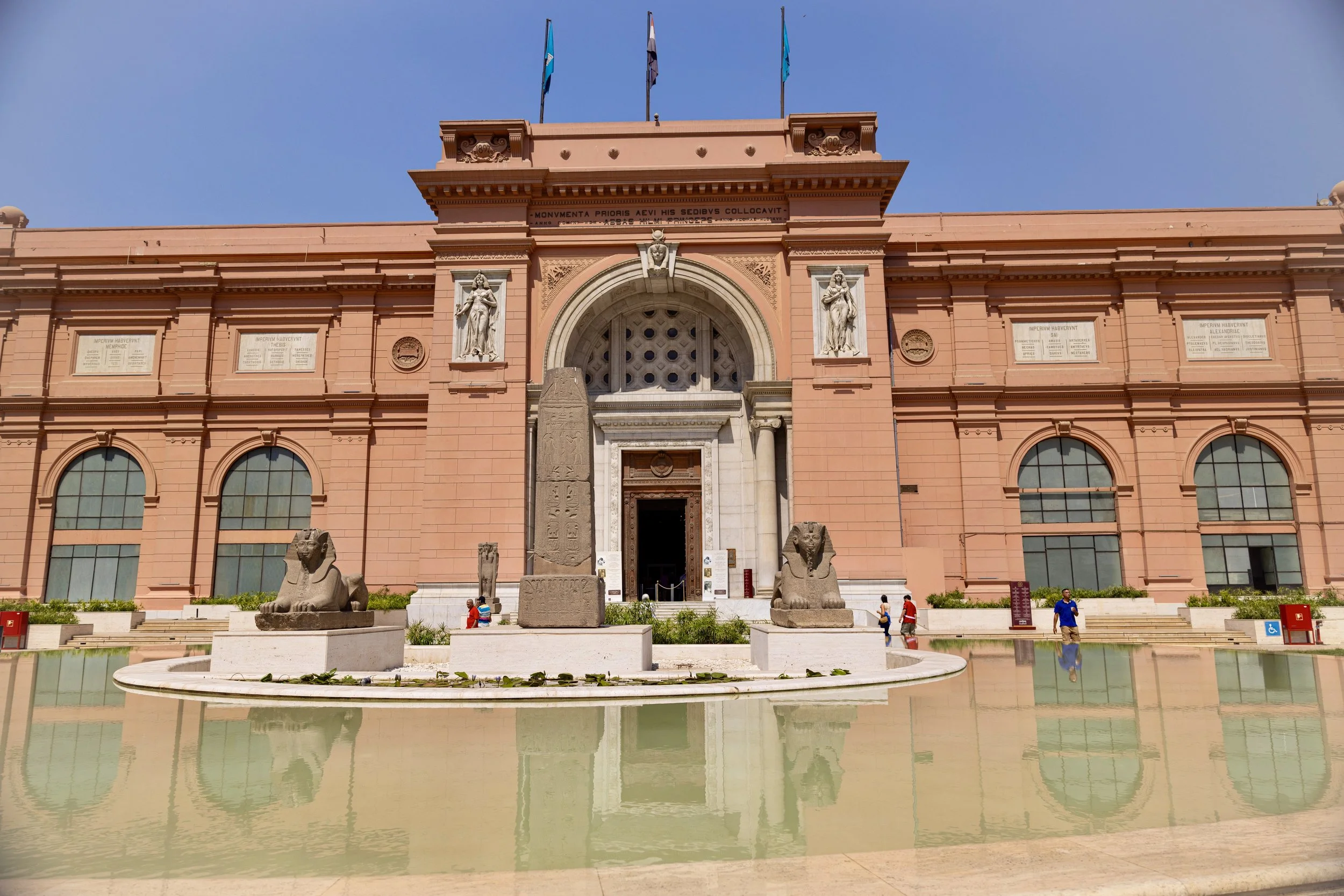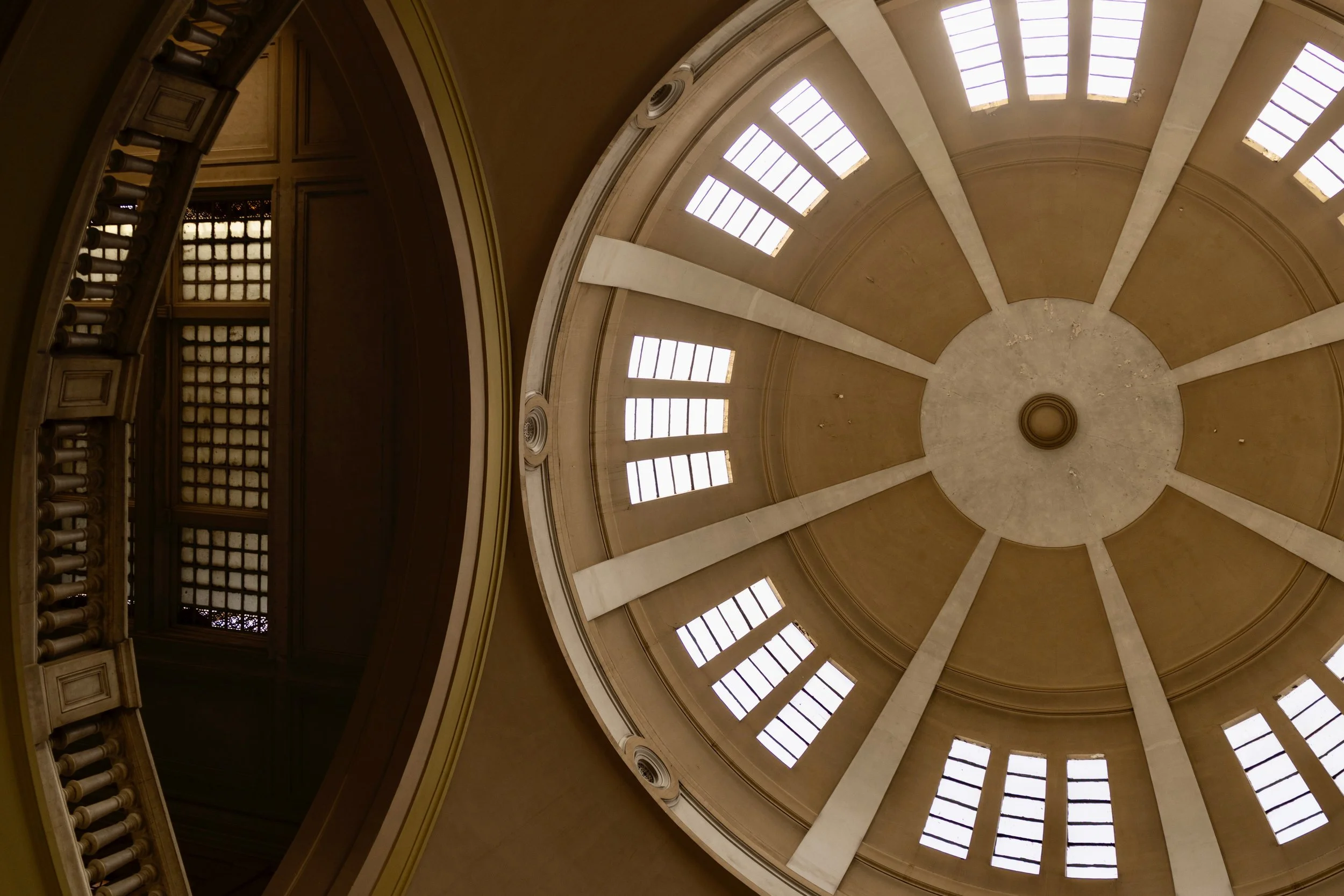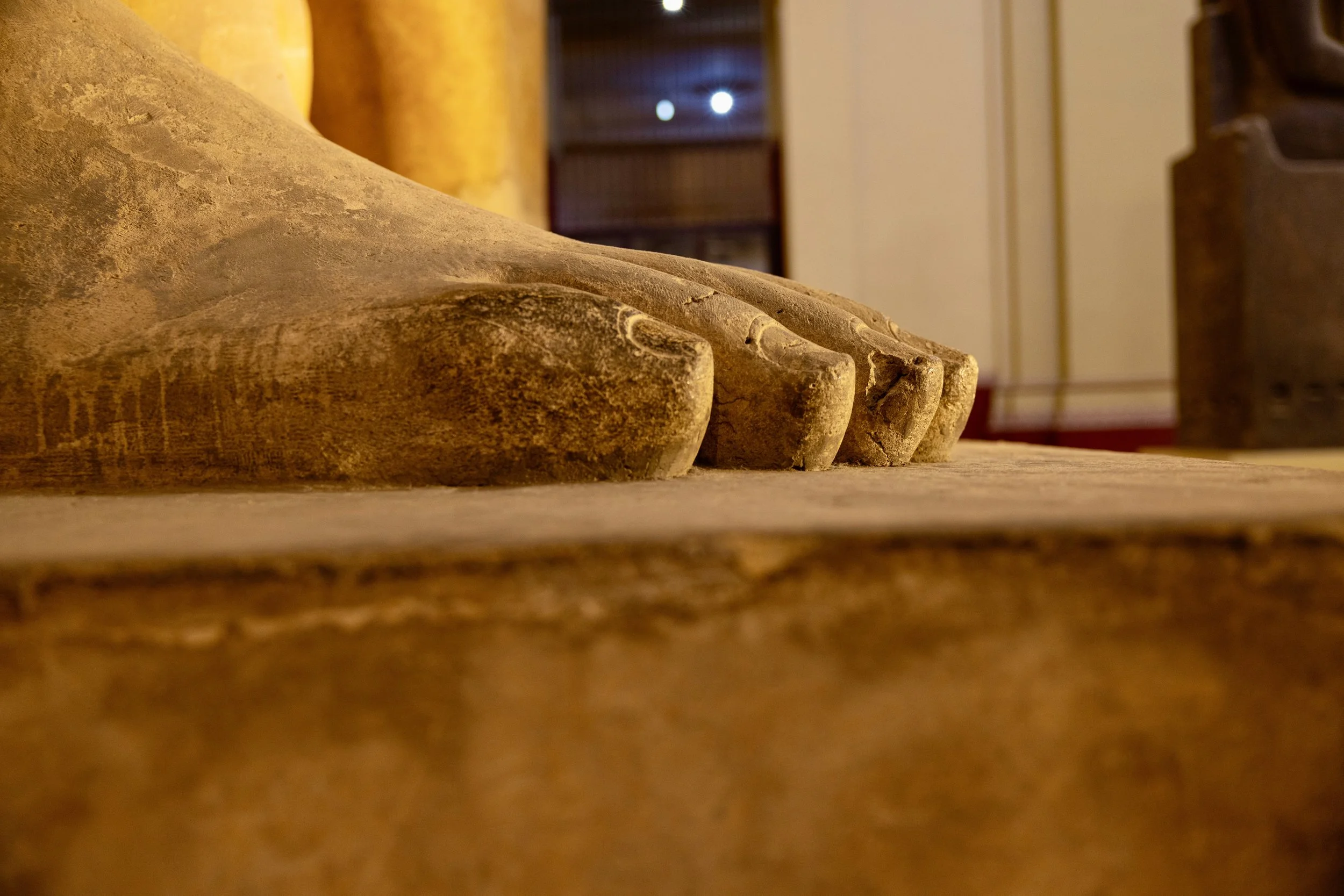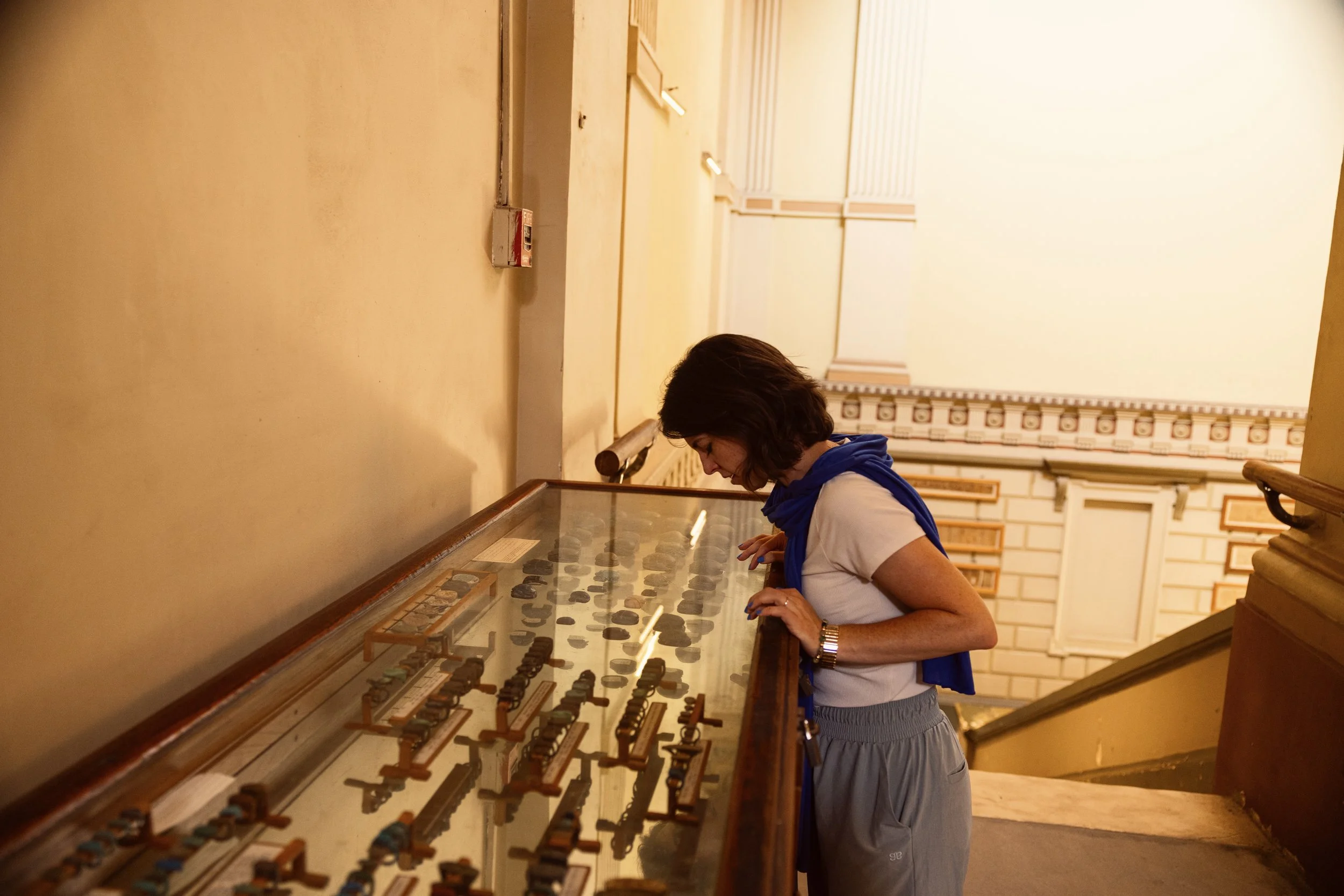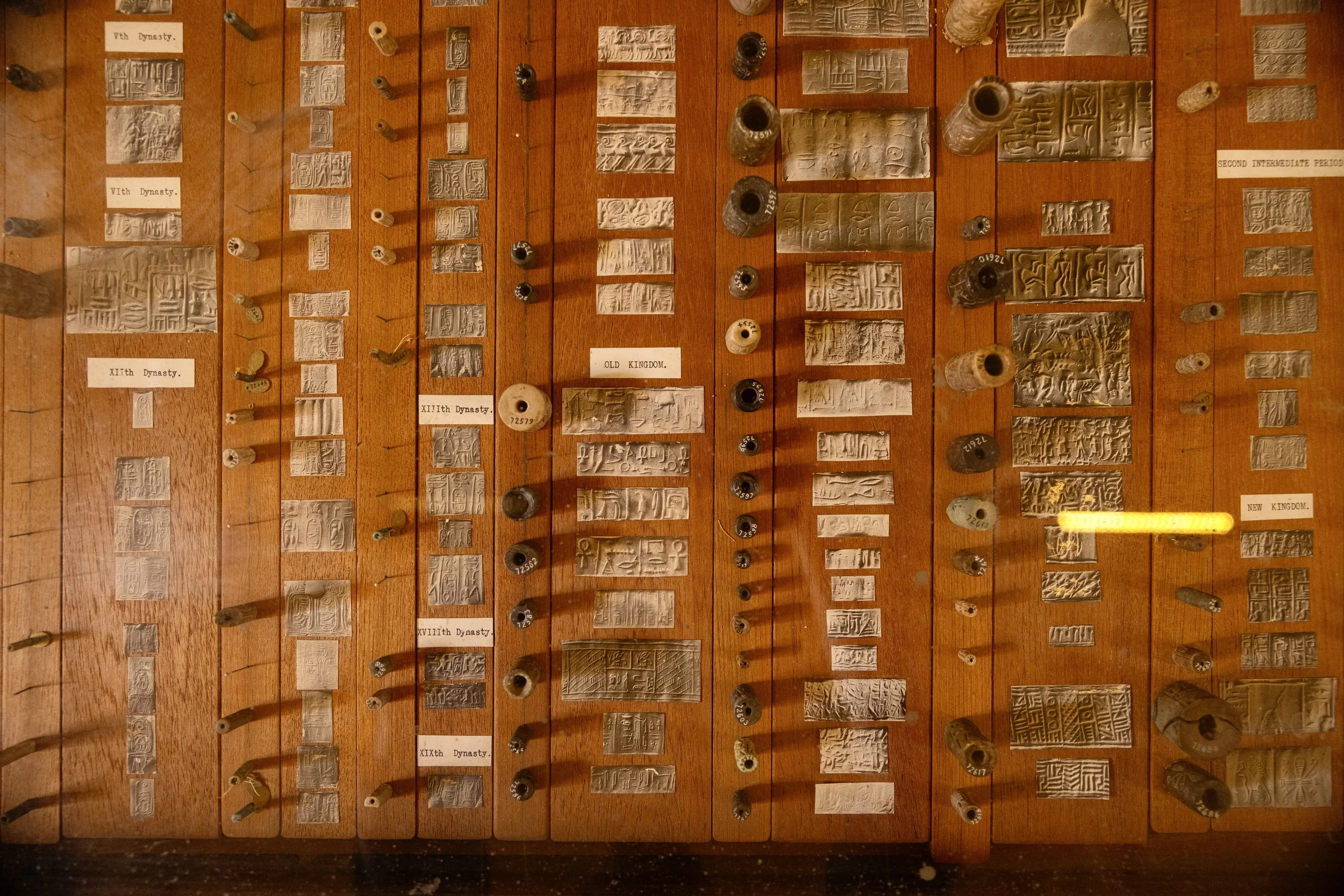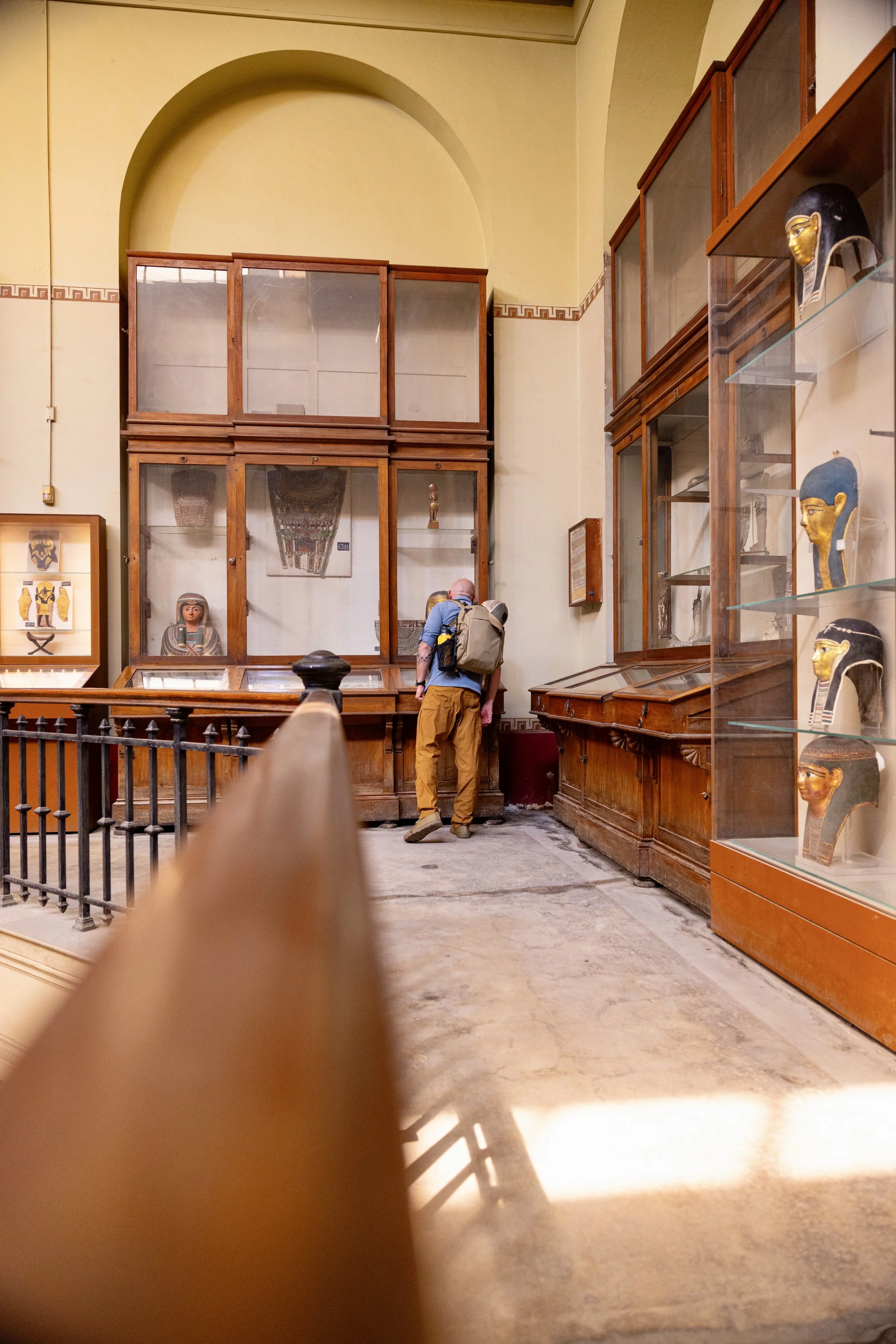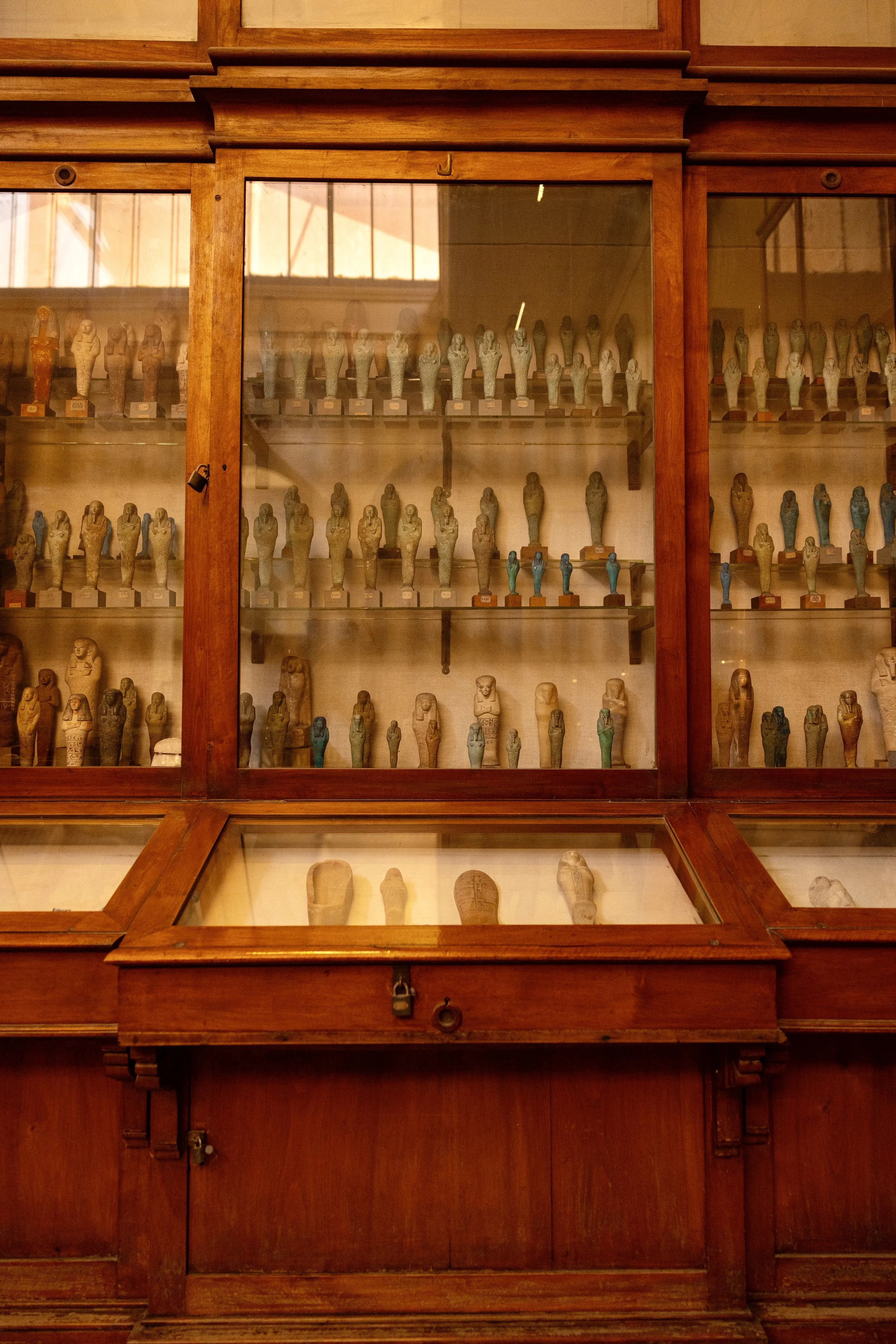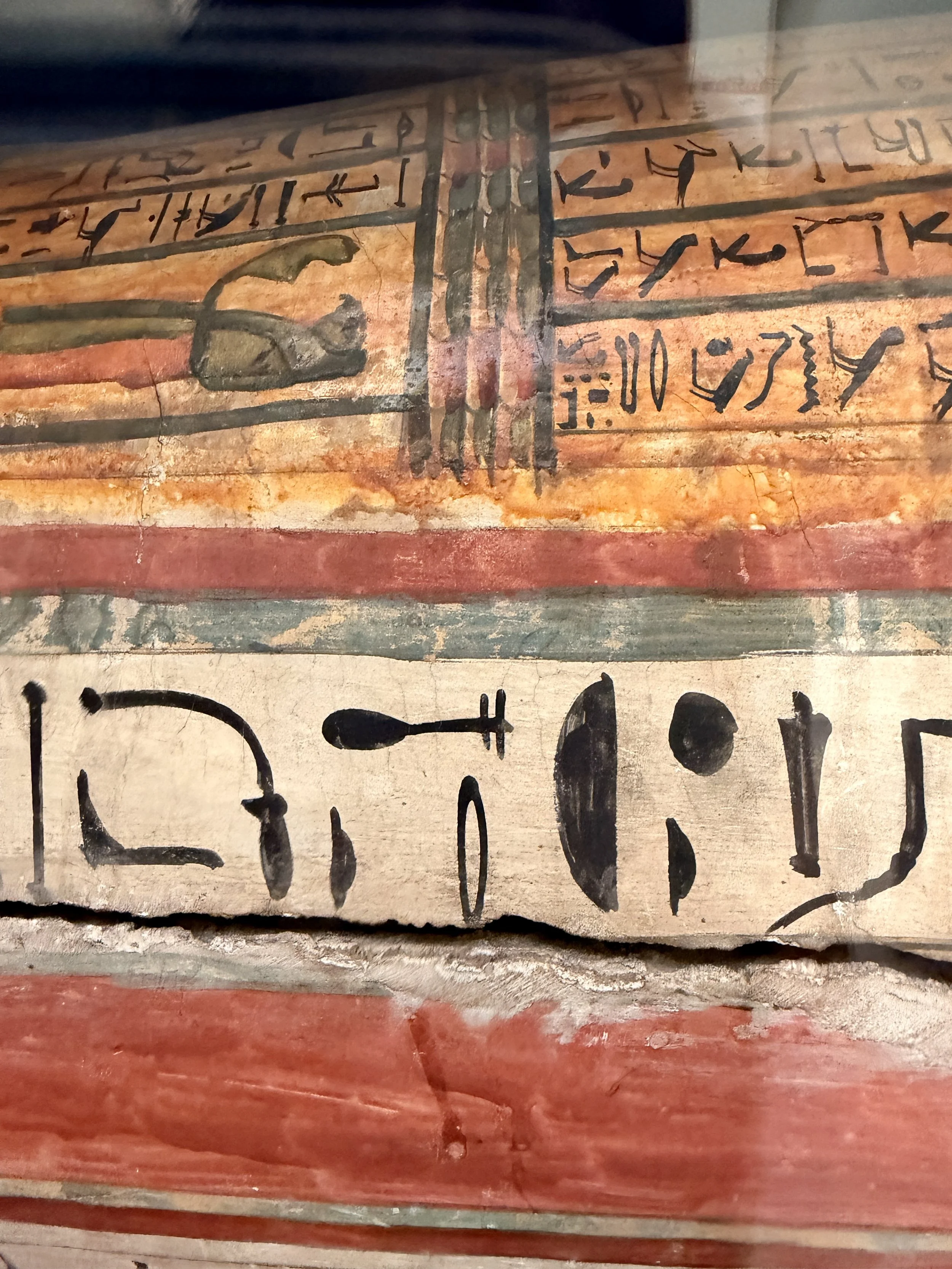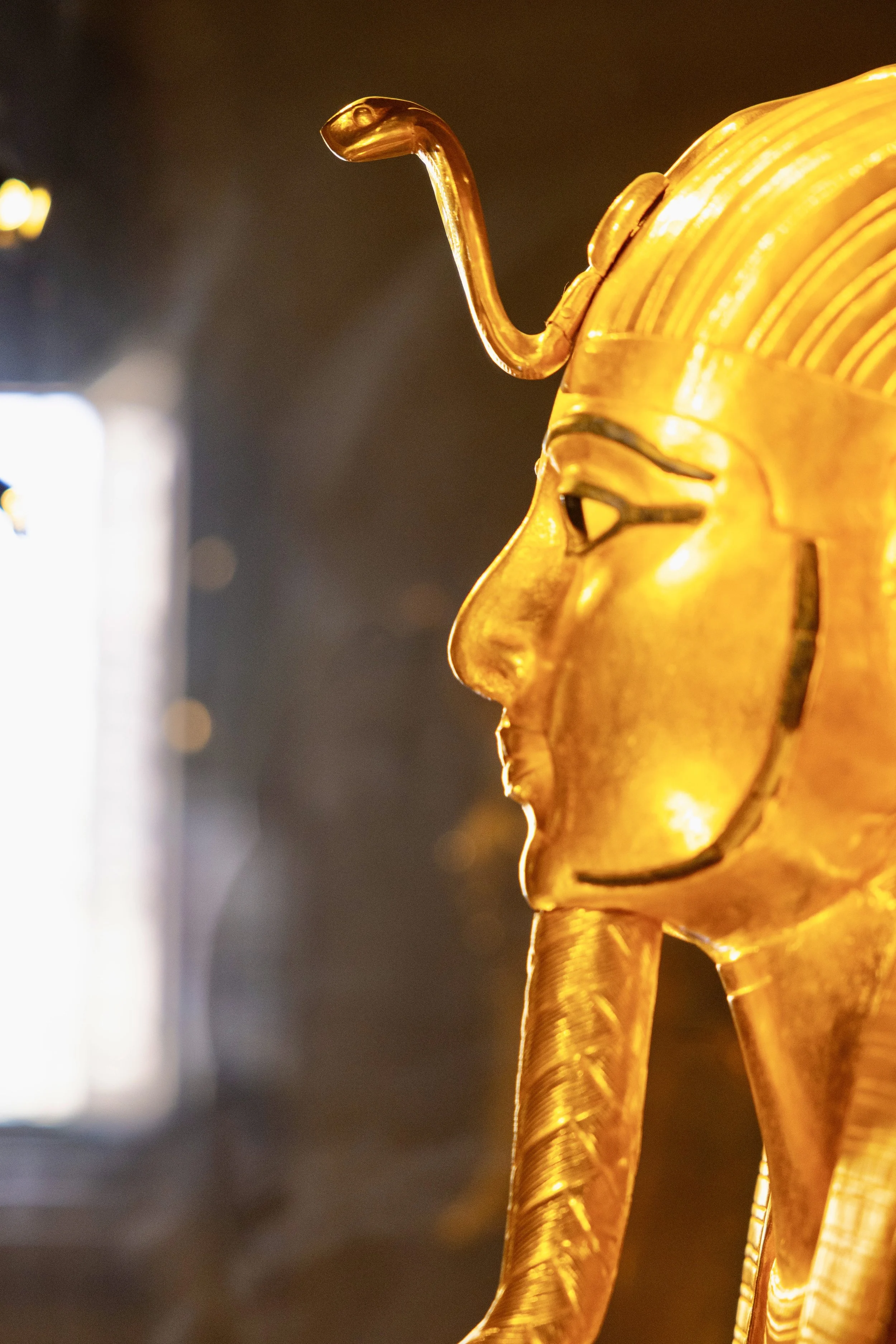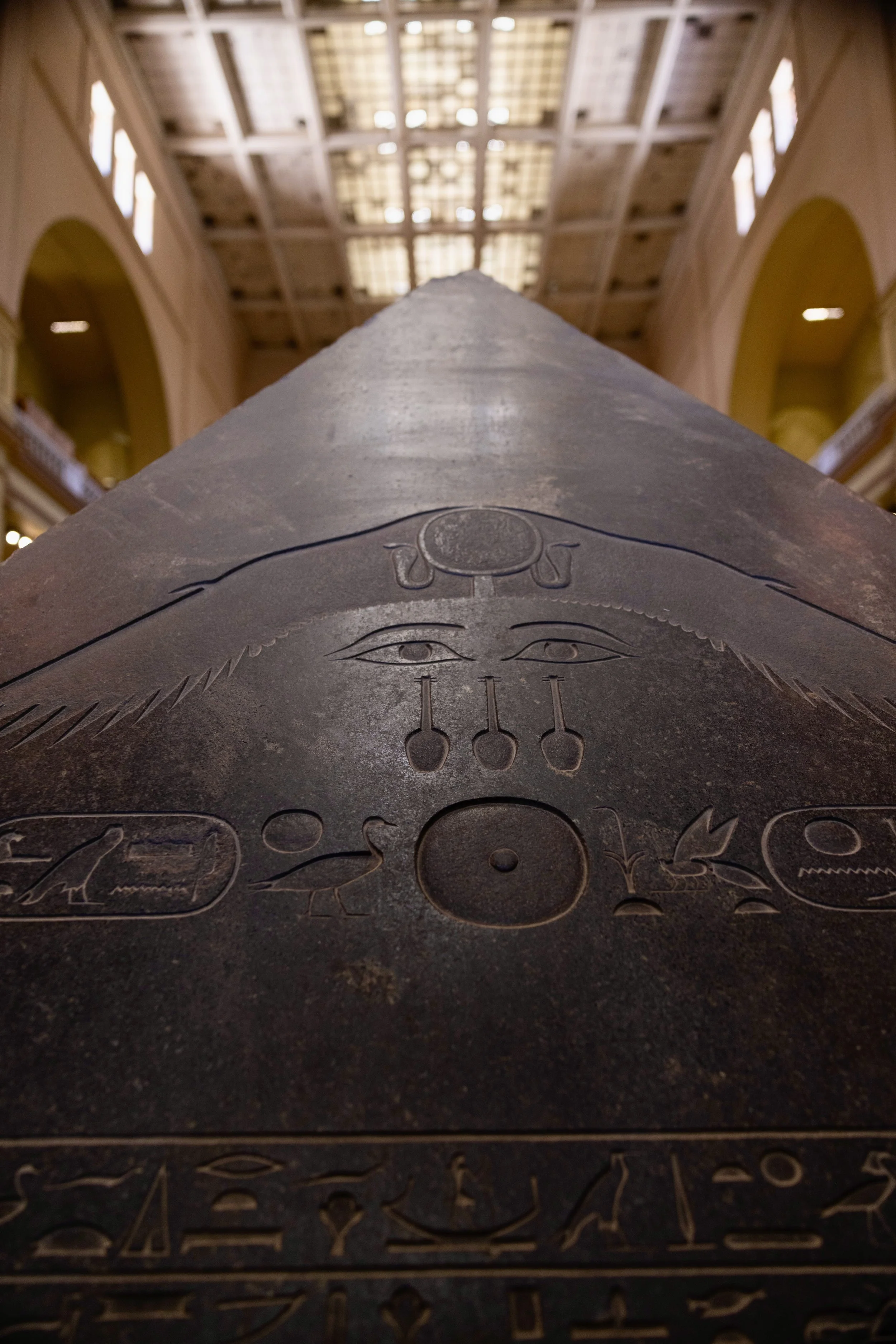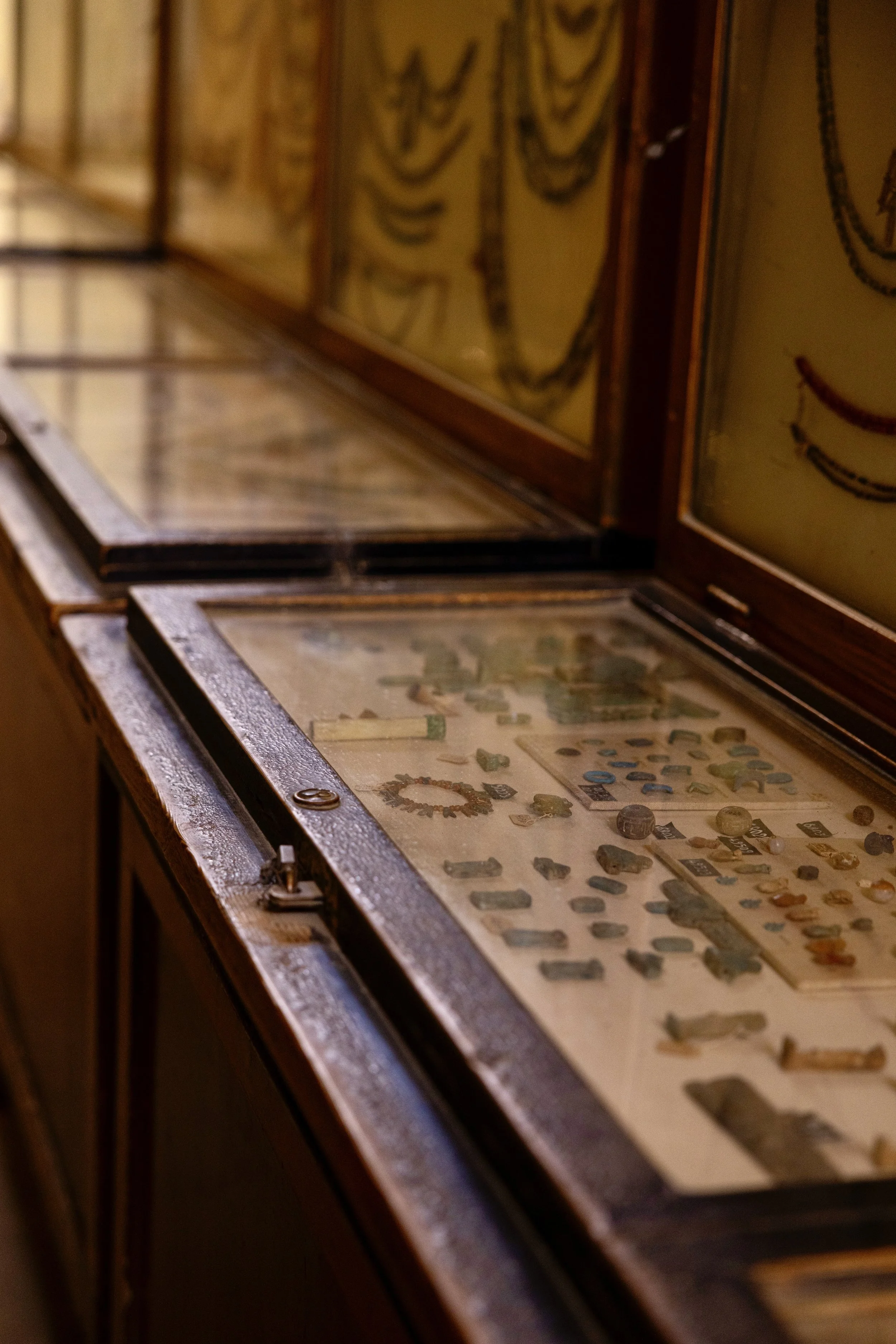The Egyptian Museum - A Time Capsule
The Egyptian Museum — A Time Capsule
Coming to Egypt as a teenager changed me. At fifteen, I was still figuring out who I was—what I valued, what made me different. Egypt forced me out of every comfort I knew. The food, the heat, the language, even the air itself, all of it rewired my sense of the world. My mind recorded everything: the noise, the smell, the texture of dust in sunlight.
Twenty years later, walking those same streets again, the memories rushed back so vividly it felt like walking into my old elementary school, everything smaller, yet charged with meaning.
The museum looks exactly as I remembered it: the same pink façade, the same carved lions standing guard. The moment I stepped inside, the scent hit me. It smells ancient, dust, stone, and wood warmed by time. The air is thick with history. I used to think it smelled dirty. Now I realize it smells real.
As a teenager I ran my fingers over a 3,000-year-old sarcophagus, trying to imagine the hands that carved it with stone tools. That simple act lit a spark of curiosity that never went out. Returning now, I traced the same lines with my eyes and felt that spark again, steady, mature, still alive.
The place hasn’t changed much. The display cases are still the originals from the early 1900s—thick wood, brass hardware, glass slightly rippled with age. Typed labels sit beside each piece, some yellowed, some curling at the edges, the mix of Arabic and English giving it a rhythm all its own. Nothing here feels staged for entertainment. It feels like walking into an archaeologist’s study mid-project, organized chaos, honest and human.
Curiosity
This museum reminded me how important it is to stay curious—to nerd out, to lean in when something fascinates you instead of brushing it off. Curiosity is what keeps the world textured. It turns “what is this?” into “what if?”
When you let yourself get lost in details—the fonts on old tags, the craftsmanship of brass hinges, the way dust settles on glass—you’re not just observing. You’re connecting. You’re giving reverence to the people who cared enough to make, to study, to preserve.
So many adults lose that childlike hunger to learn. We trade wonder for efficiency. But curiosity is what keeps creativity alive—it’s what fuels design, storytelling, leadership, and faith. The ability to nerd out over something is actually the ability to see beauty in complexity.
That’s what this museum holds for me. It’s not just a room full of relics—it’s a reminder to never stop asking questions.
“When the museum opened in 1902,” wrote British traveler Eustace Reynolds-Ball, “the very air seemed heavy with the ghosts of the Pharaohs. One could almost feel the centuries pressing close.”
Curiosity—that’s the word I’d give this place. The same word that started it all for me twenty years ago.
People watching inside the Egyptian Museum.
